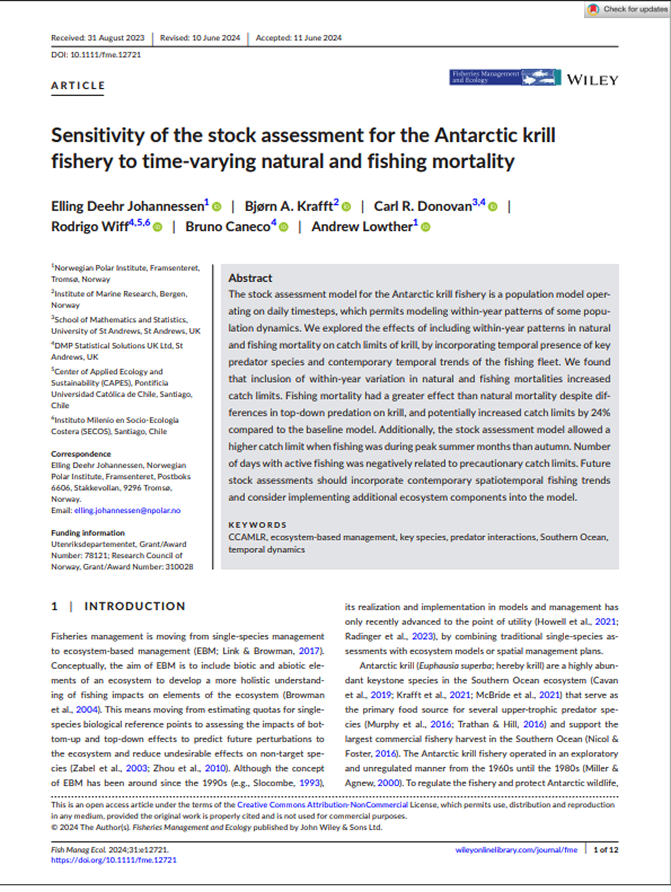Antarctic ecosystem
Fisheries management
Biomass
Krill (Euphausia superba)
Status of the FIBEX Acoustic Data from the West Atlantic
Summary
A re-analysis of FIBEX (First International BIOMASS Experiment) acoustic survey data from the West Atlantic region found good agreement between four research vessels (Itzumi, Dr Eduardo L. Holmberg, Odissey, Walther Herwig) despite using different sound frequencies for krill detection. The combined dataset estimated total West Atlantic krill biomass at 32.7 million tonnes across the surveyed areas. The Walther Herwig survey contributed approximately 80% of the krill biomass estimate for fishing area 48.1 due to detecting a massive krill concentration near Elephant Island. Data from the Professor Siedlecki survey showed inconsistent results compared to other vessels, with no clear explanation for the differences. The frequency differences between 50 kHz and 120 kHz acoustic systems did not significantly affect biomass estimates. The study confirms FIBEX as the most reliable comprehensive krill survey available for the region.

1
This 3D plot shows krill density measurements across the Bransfield Strait and South Shetland Islands region. Vertical bars represent density values at each sampling location, with taller spikes indicating higher krill concentrations. The data reveals highly patchy krill distribution, with several dramatic density peaks in specific areas while most of the surveyed region shows much lower concentrations.Key Findings
1
Four out of five research vessels showed good agreement in their krill population estimates. 2
The total estimated krill biomass was 32.7 million tonnes across the surveyed West Atlantic areas. 3
The Walther Herwig survey detected a massive krill concentration that contributed approximately 80% of the biomass estimate for fishing area 48.1. 4
The difference in acoustic frequencies (50 kHz versus 120 kHz) did not significantly affect biomass estimates. 5
Data from the Professor Siedlecki survey was inconsistent with other surveys, with no clear explanation for the differences. 6
Krill distribution was extremely uneven and concentrated in patches throughout the survey area.

